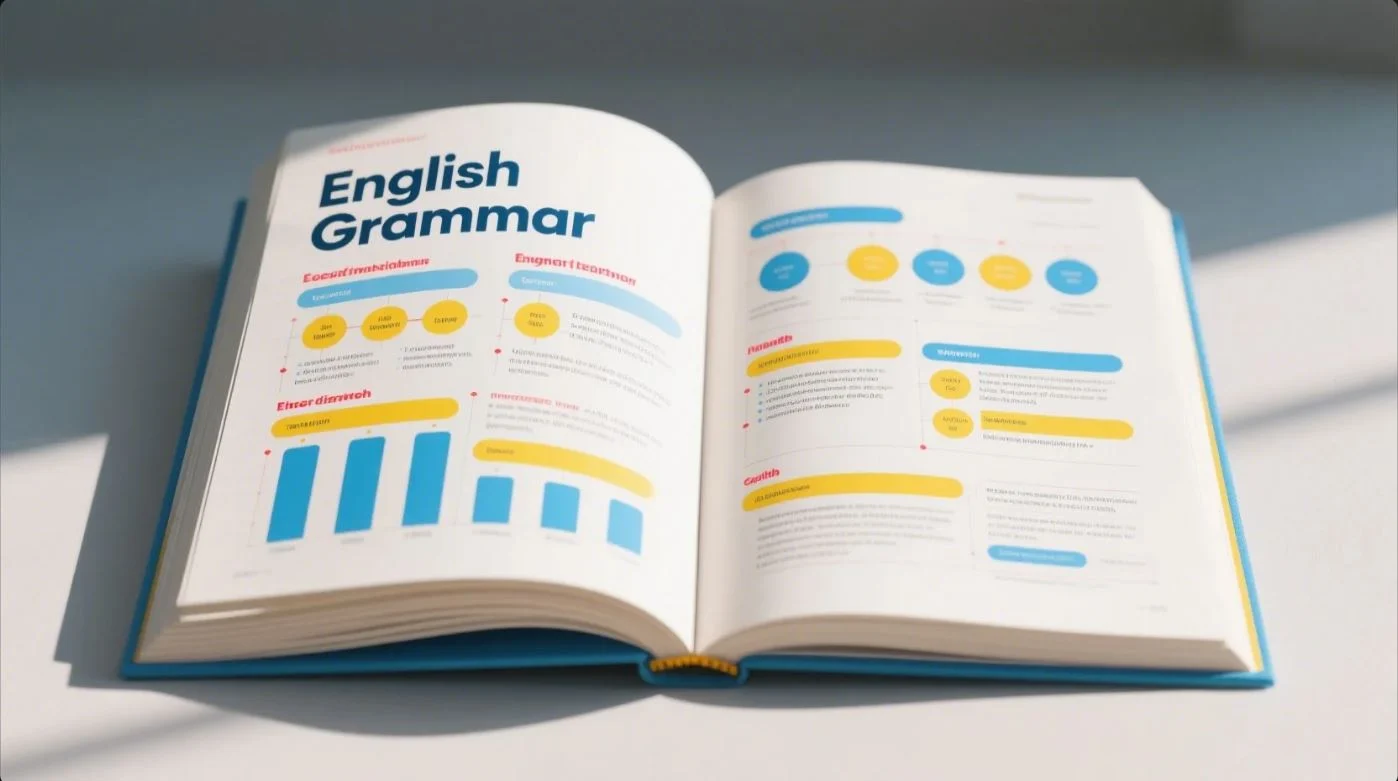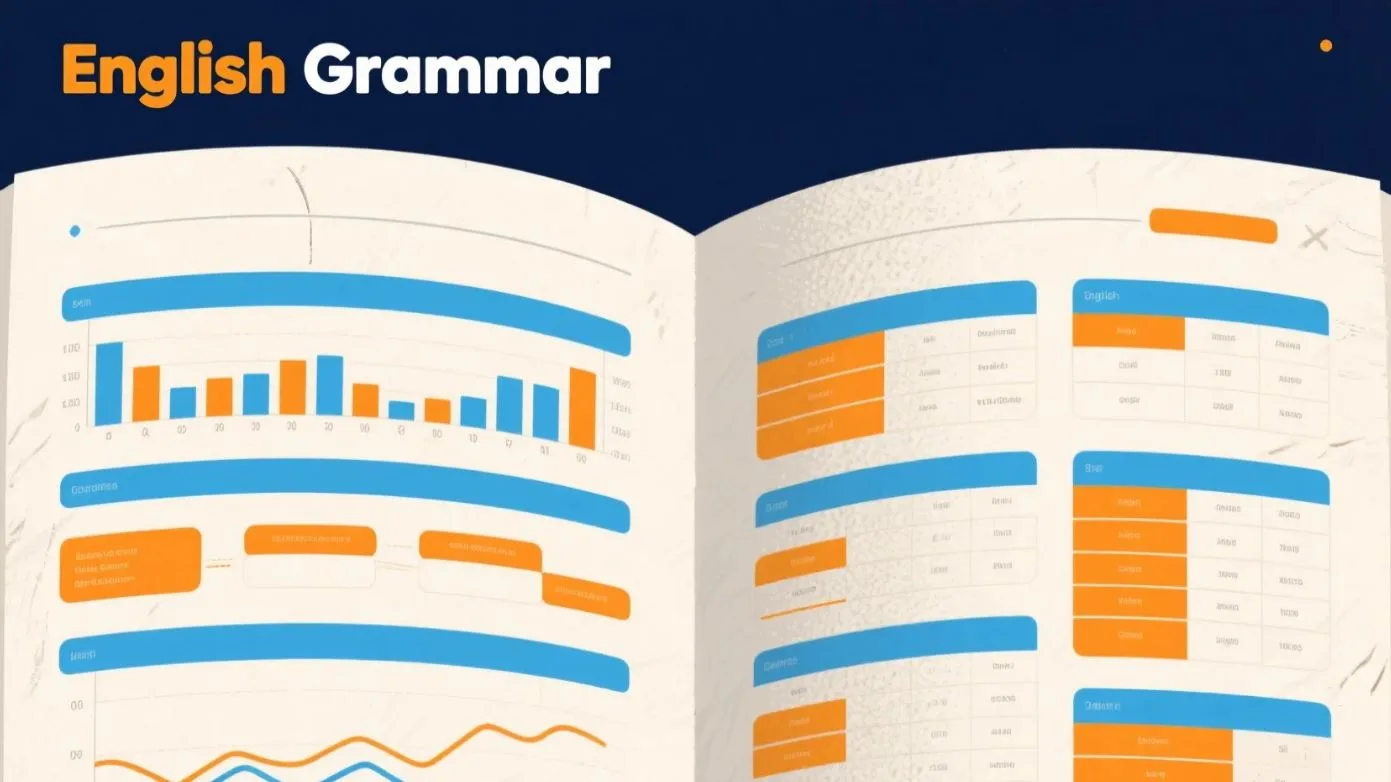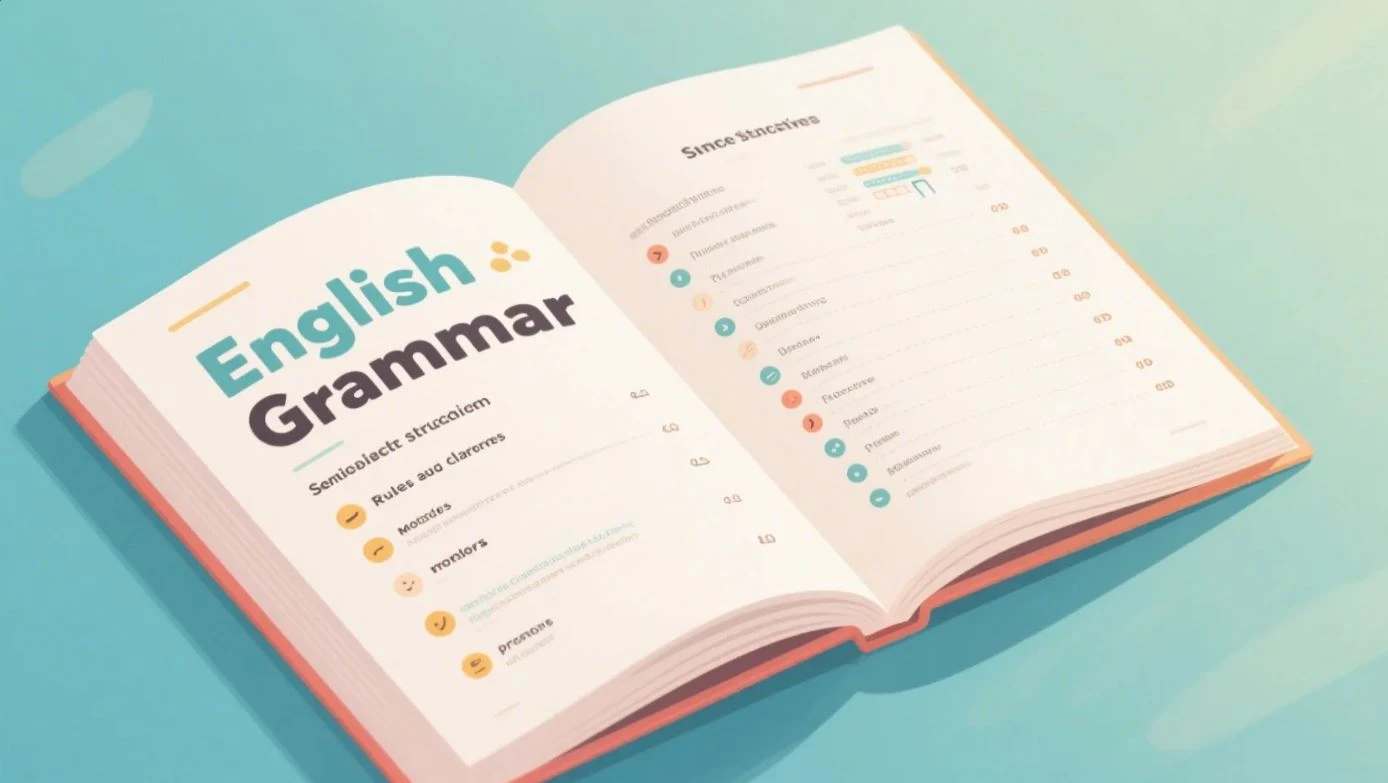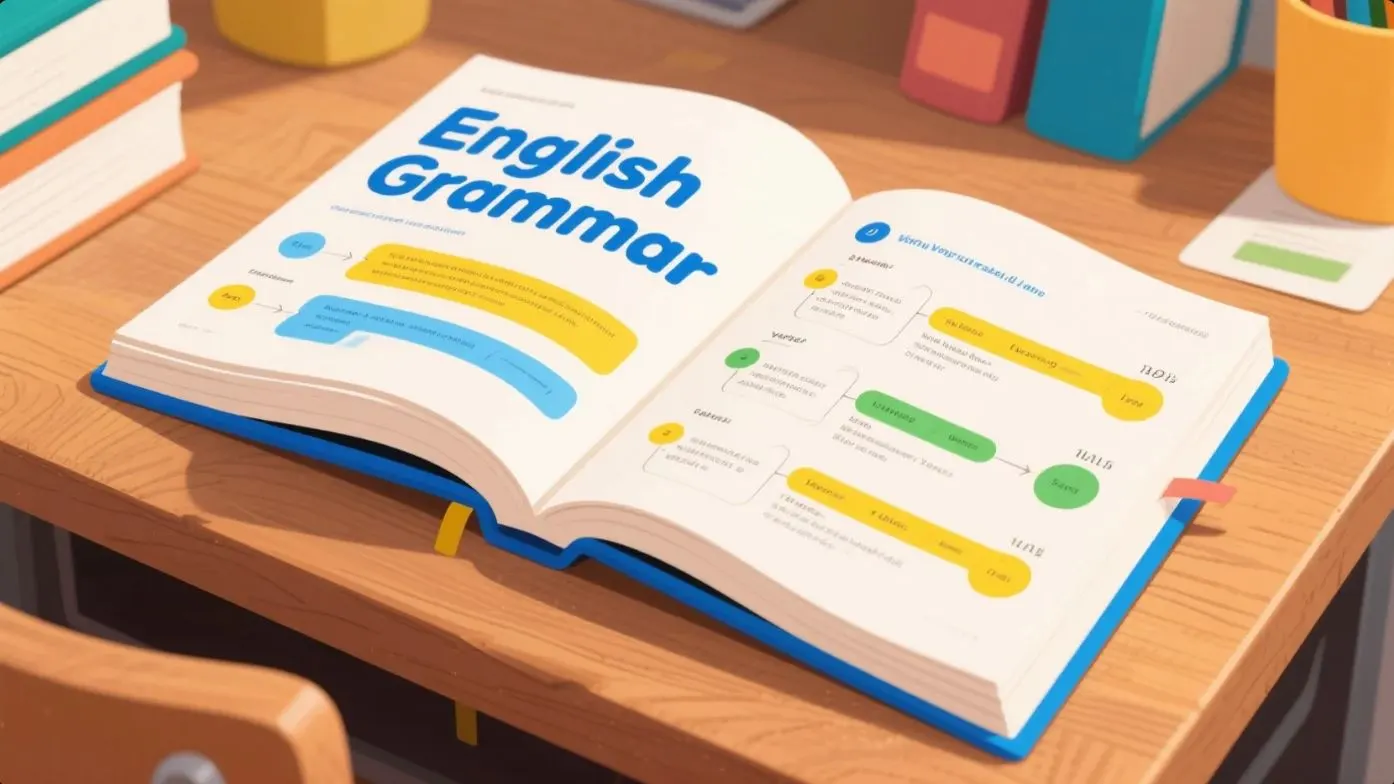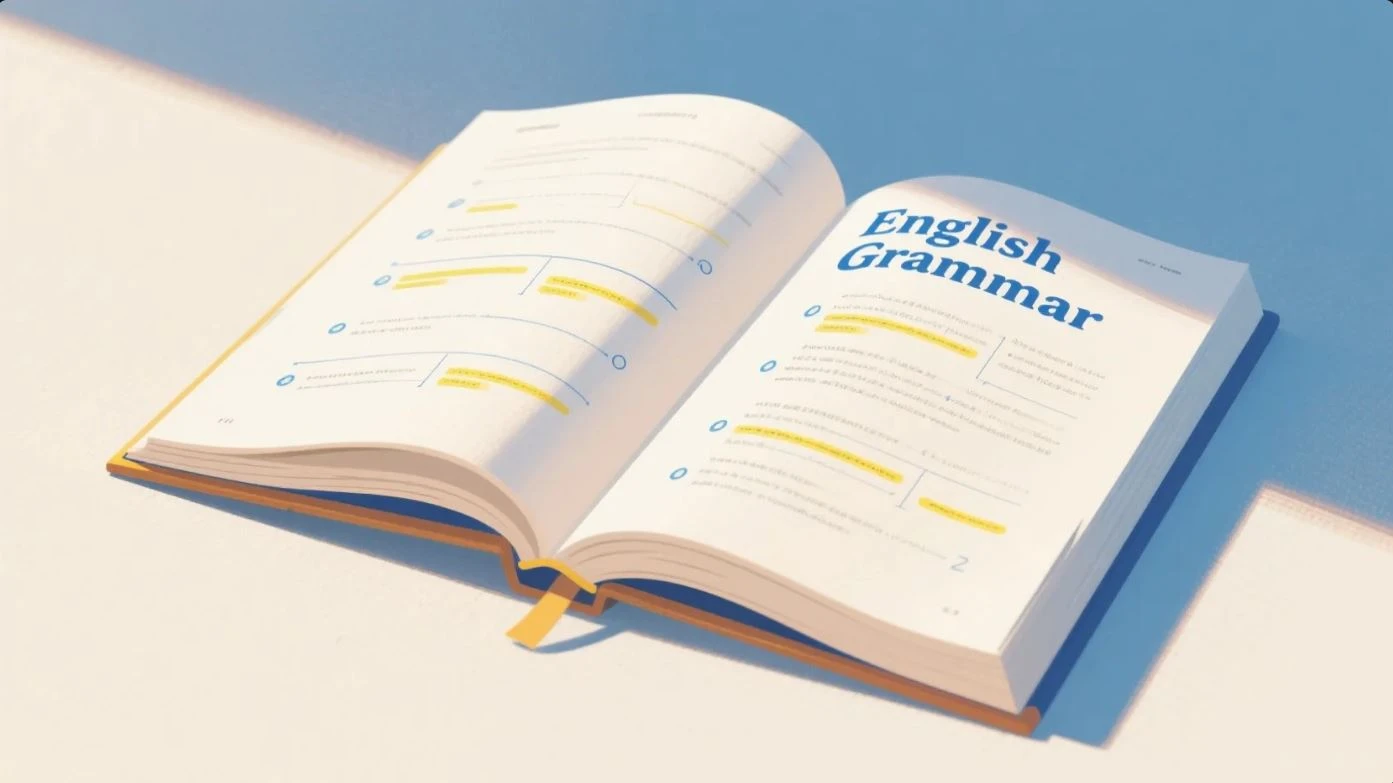Việc sử dụng tiếng Anh trong lĩnh vực xây dựng công trình thủy lợi, là vô cùng quan trọng để nắm bắt và truyền đạt thông tin chính xác. Bài viết này cung cấp 100 từ vựng và cụm từ vựng chuyên ngành, giúp bạn mở rộng vốn từ, nâng cao khả năng giao tiếp và quản lý dự án hiệu quả hơn.
Từ vựng Quản trị dự án xây dựng công trình thủy lợi
| Hydraulic Engineering | Kỹ thuật Thủy lực |
| Water Resources Management | Quản lý Tài nguyên Nước |
| Dam Construction | Xây dựng Đập |
| Flood Control | Kiểm soát Lũ |
| Irrigation Systems | Hệ thống Tưới tiêu |
| Channel Design | Thiết kế Kênh |
| Hydrological Analysis | Phân tích Thủy văn |
| Civil Engineering | Kỹ thuật Xây dựng |
| Project Management | Quản lý Dự án |
| Structural Analysis | Phân tích Kết cấu |
| Surveying | Khảo sát |
| Geotechnical Engineering | Kỹ thuật Địa chất |
| Environmental Impact Assessment | Đánh giá Tác động Môi trường |
| Construction Planning | Lập kế hoạch Xây dựng |
| Risk Management | Quản lý Rủi ro |
| Feasibility Study | Nghiên cứu Khả thi |
| Cost Estimation | Ước tính Chi phí |
| Budgeting | Lập ngân sách |
| Contract Management | Quản lý Hợp đồng |
| Site Inspection | Kiểm tra Công trường |
| Water Supply Systems | Hệ thống Cấp nước |
| Pump Stations | Trạm Bơm |
| Hydraulic Modeling | Mô hình Thủy lực |
| Flow Measurement | Đo Lưu lượng |
| Water Quality Monitoring | Giám sát Chất lượng Nước |
| Pipeline Construction | Xây dựng Đường ống |
| Sediment Control | Kiểm soát Trầm tích |
| Erosion Control | Kiểm soát Xói mòn |
| Retention Basins | Hồ chứa |
| Floodplain Management | Quản lý Vùng ngập lũ |
| Catchment Area | Diện tích Lưu vực |
| Drainage Systems | Hệ thống Thoát nước |
| Environmental Regulations | Quy định Môi trường |
| Permitting Process | Quy trình cấp phép |
| Construction Safety | An toàn Xây dựng |
| Quality Assurance | Đảm bảo Chất lượng |
| Progress Reporting | Báo cáo Tiến độ |
| Work Breakdown Structure | Cấu trúc Phân chia Công việc |
| Milestone Planning | Lập kế hoạch Cột mốc |
| Resource Allocation | Phân bổ Tài nguyên |
| Team Coordination | Phối hợp Đội ngũ |
| Stakeholder Engagement | Tham gia của Các bên liên quan |
| Contractor Supervision | Giám sát Nhà thầu |
| Subcontractor Management | Quản lý Nhà thầu phụ |
| Change Orders | Lệnh thay đổi |
| Project Schedule | Lịch trình Dự án |
| Timeline Management | Quản lý Tiến độ |
| Completion Report | Báo cáo Hoàn thành |
| Operational Maintenance | Bảo dưỡng Vận hành |
| Field Testing | Thử nghiệm Thực địa |
| Water Conservation | Bảo tồn Nước |
| Hydraulic Structures | Kết cấu Thủy lực |
| Design Specifications | Thông số Thiết kế |
| Construction Drawings | Bản vẽ Xây dựng |
| Material Procurement | Mua sắm Vật liệu |
| Soil Testing | Kiểm tra Đất |
| Site Preparation | Chuẩn bị Công trường |
| Project Scope | Phạm vi Dự án |
| Risk Assessment | Đánh giá Rủi ro |
| Safety Protocols | Quy trình An toàn |
| Regulatory Compliance | Tuân thủ Quy định |
| Environmental Mitigation | Giảm thiểu Tác động Môi trường |
| Land Acquisition | Thu hồi Đất |
| Hydrologic Cycle | Chu trình Thủy văn |
| Water Flow Dynamics | Động lực Lưu lượng Nước |
| Design Optimization | Tối ưu hóa Thiết kế |
| Project Budgeting | Lập ngân sách Dự án |
| Contract Negotiation | Đàm phán Hợp đồng |
| Worksite Management | Quản lý Công trường |
| Public Consultation | Tư vấn Công cộng |
| Performance Metrics | Chỉ số Hiệu suất |
| Operational Efficiency | Hiệu quả Vận hành |
| Water Infrastructure | Cơ sở hạ tầng Nước |
| Regulatory Standards | Tiêu chuẩn Quy định |
| Technical Specifications | Thông số Kỹ thuật |
| Resource Management | Quản lý Tài nguyên |
| Environmental Sustainability | Bền vững Môi trường |
| Maintenance Planning | Lập kế hoạch Bảo trì |
| Water Distribution | Phân phối Nước |
| Catchment Management | Quản lý Lưu vực |
| Engineering Standards | Tiêu chuẩn Kỹ thuật |
| Site Analysis | Phân tích Công trường |
| Construction Techniques | Kỹ thuật Xây dựng |
| Performance Review | Đánh giá Hiệu suất |
| Project Closeout | Hoàn thành Dự án |
| Compliance Audits | Kiểm toán Tuân thủ |
| Site Logistics | Hậu cần Công trường |
| Project Documentation | Tài liệu Dự án |
| Survey Data | Dữ liệu Khảo sát |
| Construction Schedule | Lịch trình Xây dựng |
| Material Testing | Kiểm tra Vật liệu |
| Cost Control | Kiểm soát Chi phí |
| Engineering Design | Thiết kế Kỹ thuật |
| Hydraulic Efficiency | Hiệu quả Thủy lực |
| Operational Testing | Thử nghiệm Vận hành |
| Maintenance Strategies | Chiến lược Bảo trì |
| Emergency Response | Phản ứng Khẩn cấp |
| Water Management Plan | Kế hoạch Quản lý Nước |
| Public Safety | An toàn Công cộng |
| Project Evaluation | Đánh giá Dự án |
Bài viết sử dụng thuật ngữ trên
- Hydraulic Engineering: “Hydraulic engineering focuses on the behavior of fluids and their impact on structures like dams and bridges.”
- Water Resources Management: “Effective water resources management is crucial for sustainable agriculture and urban development.”
- Dam Construction: “The dam construction project is expected to be completed by the end of the year.”
- Flood Control: “Flood control measures include building levees and floodwalls to protect communities from rising waters.”
- Irrigation Systems: “Modern irrigation systems use sensors to optimize water use and improve crop yields.”
- Channel Design: “The channel design for the new river diversion includes both structural and environmental considerations.”
- Hydrological Analysis: “Hydrological analysis is used to predict water flow patterns and potential flooding risks.”
- Civil Engineering: “Civil engineering encompasses the design and construction of infrastructure such as roads, bridges, and water systems.”
- Project Management: “Effective project management ensures that construction projects are completed on time and within budget.”
- Structural Analysis: “Structural analysis helps engineers determine the strength and stability of a building’s framework.”
- Surveying: “Surveying involves measuring and mapping the land to guide construction and development projects.”
- Geotechnical Engineering: “Geotechnical engineering assesses soil and rock properties to ensure the stability of structures.”
- Environmental Impact Assessment: “An environmental impact assessment evaluates the potential effects of a project on the surrounding ecosystem.”
- Construction Planning: “Construction planning involves creating detailed schedules and resource allocation strategies.”
- Risk Management: “Risk management identifies potential issues and develops strategies to mitigate their impact.”
- Feasibility Study: “A feasibility study determines whether a project is viable and worth pursuing.”
- Cost Estimation: “Accurate cost estimation is essential for budgeting and financial planning in construction projects.”
- Budgeting: “Effective budgeting helps ensure that the project remains financially viable throughout its duration.”
- Contract Management: “Contract management involves overseeing agreements with contractors and ensuring compliance with terms.”
- Site Inspection: “Regular site inspections help identify any issues that need to be addressed before construction progresses.”
- Water Supply Systems: “Water supply systems are designed to provide clean and reliable water to communities.”
- Pump Stations: “Pump stations are used to move water from one location to another within a water distribution network.”
- Hydraulic Modeling: “Hydraulic modeling simulates water flow to predict the impact of new infrastructure on existing systems.”
- Flow Measurement: “Flow measurement tools are used to assess the quantity of water moving through a system.”
- Water Quality Monitoring: “Water quality monitoring ensures that the water meets health and safety standards.”
- Pipeline Construction: “Pipeline construction requires precise installation to prevent leaks and ensure efficient operation.”
- Sediment Control: “Sediment control measures are implemented to prevent soil erosion and protect water quality.”
- Erosion Control: “Erosion control techniques, such as planting vegetation, help stabilize soil and prevent loss.”
- Retention Basins: “Retention basins capture and store runoff to manage stormwater and reduce flooding.”
- Floodplain Management: “Floodplain management aims to minimize the impact of flooding on communities and infrastructure.”
- Catchment Area: “The catchment area of a river includes all the land where rainwater collects and flows into the river.”
- Drainage Systems: “Drainage systems are designed to efficiently remove excess water from roads and buildings.”
- Environmental Regulations: “Environmental regulations ensure that construction projects do not harm natural habitats.”
- Permitting Process: “The permitting process involves obtaining the necessary approvals before starting construction.”
- Construction Safety: “Construction safety protocols are critical to protecting workers on the job site.”
- Quality Assurance: “Quality assurance practices help ensure that construction meets the required standards and specifications.”
- Progress Reporting: “Progress reporting provides updates on the status of a project and any issues encountered.”
- Work Breakdown Structure: “The work breakdown structure divides the project into manageable tasks and deliverables.”
- Milestone Planning: “Milestone planning helps track key achievements and deadlines throughout the project.”
- Resource Allocation: “Effective resource allocation ensures that personnel and materials are used efficiently.”
- Team Coordination: “Team coordination is essential for ensuring that all members work towards the same project goals.”
- Stakeholder Engagement: “Stakeholder engagement involves communicating with those affected by the project and addressing their concerns.”
- Contractor Supervision: “Contractor supervision ensures that work is completed according to contract specifications and quality standards.”
- Subcontractor Management: “Subcontractor management involves overseeing the work of secondary contractors to ensure compliance with project requirements.”
- Change Orders: “Change orders document any modifications to the original project scope and their impact on cost and schedule.”
- Project Schedule: “The project schedule outlines all key activities and deadlines to keep the project on track.”
- Timeline Management: “Timeline management involves adjusting schedules to accommodate changes and delays.”
- Completion Report: “A completion report summarizes the final outcomes and performance of the project.”
- Operational Maintenance: “Operational maintenance ensures that infrastructure remains functional and efficient after construction.”
- Field Testing: “Field testing assesses the performance of construction materials and methods under real-world conditions.”
- Water Conservation: “Water conservation practices help reduce waste and preserve water resources.”
- Hydraulic Structures: “Hydraulic structures, such as dams and weirs, are designed to manage water flow and storage.”
- Design Specifications: “Design specifications provide detailed guidelines for constructing and assembling components.”
- Construction Drawings: “Construction drawings illustrate the design and layout of a project for builders and contractors.”
- Material Procurement: “Material procurement involves sourcing and purchasing the necessary materials for construction.”
- Soil Testing: “Soil testing determines the properties of soil to ensure it can support the proposed structure.”
- Site Preparation: “Site preparation includes clearing and grading the land before construction begins.”
- Project Scope: “The project scope defines the boundaries and objectives of the project.”
- Risk Assessment: “Risk assessment identifies potential hazards and evaluates their likelihood and impact.”
- Safety Protocols: “Safety protocols outline procedures to protect workers and prevent accidents on site.”
- Regulatory Compliance: “Regulatory compliance ensures that all aspects of the project adhere to local laws and standards.”
- Environmental Mitigation: “Environmental mitigation involves taking steps to reduce the negative impact of a project on the environment.”
- Land Acquisition: “Land acquisition involves obtaining property necessary for the construction of the project.”
- Hydrologic Cycle: “The hydrologic cycle describes the continuous movement of water on, above, and below the Earth’s surface.”
- Water Flow Dynamics: “Water flow dynamics examines how water moves through different environments and systems.”
- Design Optimization: “Design optimization seeks to improve efficiency and performance by refining design elements.”
- Project Budgeting: “Project budgeting involves allocating financial resources to various aspects of the construction project.”
- Contract Negotiation: “Contract negotiation ensures that terms are agreed upon and documented before work begins.”
- Worksite Management: “Worksite management involves overseeing daily operations to ensure everything runs smoothly.”
- Public Consultation: “Public consultation provides an opportunity for community input and feedback on the project.”
- Performance Metrics: “Performance metrics measure the effectiveness and success of various project components.”
- Operational Efficiency: “Operational efficiency focuses on maximizing productivity and minimizing waste.”
- Water Infrastructure: “Water infrastructure includes systems such as reservoirs, pipelines, and treatment plants.”
- Regulatory Standards: “Regulatory standards set the requirements and guidelines for safe and effective construction practices.”
- Technical Specifications: “Technical specifications detail the technical requirements and standards for construction materials and methods.”
- Resource Management: “Resource management involves planning and controlling the use of resources to achieve project goals.”
- Environmental Sustainability: “Environmental sustainability aims to minimize the ecological impact of construction and operations.”
- Maintenance Planning: “Maintenance planning ensures that infrastructure remains in good condition and operates efficiently.”
- Water Distribution: “Water distribution systems deliver water from sources to consumers through a network of pipes and pumps.”
- Catchment Management: “Catchment management involves managing the area where water collects and flows to protect water quality and quantity.”
- Engineering Standards: “Engineering standards provide guidelines for designing and constructing safe and reliable structures.”
- Site Analysis: “Site analysis evaluates the physical and environmental characteristics of a location before construction begins.”
- Construction Techniques: “Construction techniques refer to the methods and practices used to build structures efficiently and safely.”
- Performance Review: “A performance review assesses how well the project has met its objectives and identifies areas for improvement.”
- Project Closeout: “Project closeout involves finalizing all tasks and documentation to formally complete the project.”
- Compliance Audits: “Compliance audits review project practices and procedures to ensure adherence to regulations and standards.”
- Site Logistics: “Site logistics manage the organization and flow of materials and equipment on the construction site.”
- Project Documentation: “Project documentation includes all records and reports related to the project’s planning, execution, and completion.”
- Survey Data: “Survey data provides accurate measurements and information used for planning and construction purposes.”
- Construction Schedule: “The construction schedule outlines the timeline for each phase of the project.”
- Material Testing: “Material testing assesses the quality and suitability of construction materials.”
- Cost Control: “Cost control measures help keep the project within its budget by monitoring and managing expenses.”
- Engineering Design: “Engineering design involves creating detailed plans and specifications for constructing structures.”
- Hydraulic Efficiency: “Hydraulic efficiency measures how effectively a system manages and utilizes water flow.”
- Operational Testing: “Operational testing ensures that systems and equipment function correctly before they are put into service.”
- Maintenance Strategies: “Maintenance strategies outline the approaches and schedules for keeping infrastructure in good working order.”
- Emergency Response: “Emergency response plans outline procedures for addressing unexpected incidents or accidents on site.”
- Water Management Plan: “A water management plan details how water resources will be allocated and used effectively.”
- Public Safety: “Public safety measures are implemented to protect the community during and after construction activities.”
- Project Evaluation: “Project evaluation assesses the overall success and effectiveness of the completed project.”
Bài tập
- Hydraulic ________ focuses on the behavior of fluids and their impact on structures.
- Effective ________ management is crucial for sustainable agriculture.
- The ________ construction project is expected to be completed soon.
- Flood ________ measures include building levees and floodwalls.
- Modern ________ systems use sensors to optimize water use.
- The ________ design for the river diversion includes structural considerations.
- ________ analysis is used to predict water flow patterns and potential flooding risks.
- ________ engineering encompasses the design and construction of infrastructure.
- Effective ________ ensures that projects are completed on time and within budget.
- ________ analysis helps engineers determine the strength and stability of structures.
- ________ involves measuring and mapping the land for construction projects.
- ________ engineering assesses soil and rock properties to ensure stability.
- An ________ assesses the potential effects of a project on the ecosystem.
- ________ involves creating detailed schedules and resource allocation strategies.
- ________ identifies potential issues and develops strategies to mitigate their impact.
- A ________ determines whether a project is viable and worth pursuing.
- Accurate ________ is essential for budgeting and financial planning.
- Effective ________ helps ensure that the project remains financially viable.
- ________ involves overseeing agreements with contractors and ensuring compliance.
- Regular ________ help identify any issues that need to be addressed.
- ________ systems are designed to provide clean and reliable water to communities.
- ________ are used to move water from one location to another in the network.
- ________ simulates water flow to predict the impact of new infrastructure.
- ________ tools are used to assess the quantity of water moving through a system.
- ________ ensures that the water meets health and safety standards.
- ________ requires precise installation to prevent leaks and ensure efficient operation.
- ________ measures are implemented to prevent soil erosion and protect water quality.
- ________ techniques help stabilize soil and prevent loss.
- ________ capture and store runoff to manage stormwater and reduce flooding.
- ________ aims to minimize the impact of flooding on communities.
- The ________ of a river includes all the land where rainwater collects.
- ________ are designed to efficiently remove excess water from roads and buildings.
- ________ ensure that construction projects do not harm natural habitats.
- The ________ involves obtaining the necessary approvals before starting construction.
- ________ protocols are critical to protecting workers on the job site.
- ________ practices help ensure that construction meets the required standards.
- ________ provides updates on the status of a project and any issues encountered.
- The ________ divides the project into manageable tasks and deliverables.
- ________ helps track key achievements and deadlines throughout the project.
- Effective ________ ensures that personnel and materials are used efficiently.
- ________ is essential for ensuring that all members work towards the same goals.
- ________ involves communicating with those affected by the project and addressing their concerns.
- ________ ensures that work is completed according to contract specifications.
- ________ involves overseeing the work of secondary contractors to ensure compliance.
- ________ document any modifications to the original project scope.
- The ________ outlines all key activities and deadlines to keep the project on track.
- ________ involves adjusting schedules to accommodate changes and delays.
- A ________ summarizes the final outcomes and performance of the project.
- ________ ensures that infrastructure remains functional and efficient after construction.
- ________ assesses the performance of construction materials and methods under real-world conditions.
- ________ practices help reduce waste and preserve water resources.
- ________ such as dams and weirs are designed to manage water flow and storage.
- ________ provide detailed guidelines for constructing and assembling components.
- ________ illustrate the design and layout of a project for builders and contractors.
- ________ involves sourcing and purchasing the necessary materials for construction.
- ________ determines the properties of soil to ensure it can support the proposed structure.
- ________ includes clearing and grading the land before construction begins.
- The ________ defines the boundaries and objectives of the project.
- ________ identifies potential hazards and evaluates their likelihood and impact.
- ________ outline procedures to protect workers and prevent accidents on site.
- ________ ensures that all aspects of the project adhere to local laws and standards.
- ________ involves taking steps to reduce the negative impact of a project on the environment.
- ________ involves obtaining property necessary for the construction of the project.
- The ________ describes the continuous movement of water on, above, and below the Earth’s surface.
- ________ examines how water moves through different environments and systems.
- ________ seeks to improve efficiency and performance by refining design elements.
- ________ involves allocating financial resources to various aspects of the construction project.
- ________ ensures that terms are agreed upon and documented before work begins.
- ________ involves overseeing daily operations to ensure everything runs smoothly.
- ________ provides an opportunity for community input and feedback on the project.
- ________ measure the effectiveness and success of various project components.
- ________ focuses on maximizing productivity and minimizing waste.
- ________ includes systems such as reservoirs, pipelines, and treatment plants.
- ________ set the requirements and guidelines for safe and effective construction practices.
- ________ detail the technical requirements and standards for construction materials and methods.
- ________ involves planning and controlling the use of resources to achieve project goals.
- ________ aims to minimize the ecological impact of construction and operations.
- ________ ensures that infrastructure remains in good condition and operates efficiently.
- ________ deliver water from sources to consumers through a network of pipes and pumps.
- ________ involves managing the area where water collects and flows to protect water quality.
- ________ provide guidelines for designing and constructing safe and reliable structures.
- ________ evaluates the physical and environmental characteristics of a location before construction begins.
- ________ refers to the methods and practices used to build structures efficiently and safely.
- A ________ assesses how well the project has met its objectives and identifies areas for improvement.
- ________ involves finalizing all tasks and documentation to formally complete the project.
- ________ review project practices and procedures to ensure adherence to regulations and standards.
- ________ manage the organization and flow of materials and equipment on the construction site.
- ________ includes all records and reports related to the project’s planning, execution, and completion.
- ________ provides accurate measurements and information used for planning and construction purposes.
- The ________ outlines the timeline for each phase of the project.
- ________ assesses the quality and suitability of construction materials.
- ________ measures help keep the project within its budget by monitoring and managing expenses.
- ________ involves creating detailed plans and specifications for constructing structures.
- ________ measures how effectively a system manages and utilizes water flow.
- ________ ensures that systems and equipment function correctly before they are put into service.
- ________ outline the approaches and schedules for keeping infrastructure in good working order.
- ________ plans outline procedures for addressing unexpected incidents or accidents on site.
- A ________ details how water resources will be allocated and used effectively.
- ________ measures are implemented to protect the community during and after construction activities.
- ________ assesses the overall success and effectiveness of the completed project.
Đáp án
- Hydraulic Engineering focuses on the behavior of fluids and their impact on structures.
- Effective Water Resources Management is crucial for sustainable agriculture.
- The Dam Construction project is expected to be completed soon.
- Flood Control measures include building levees and floodwalls.
- Modern Irrigation Systems use sensors to optimize water use.
- The Channel Design for the river diversion includes structural considerations.
- Hydrological Analysis is used to predict water flow patterns and potential flooding risks.
- Civil Engineering encompasses the design and construction of infrastructure.
- Effective Project Management ensures that projects are completed on time and within budget.
- Structural Analysis helps engineers determine the strength and stability of structures.
- Surveying involves measuring and mapping the land for construction projects.
- Geotechnical Engineering assesses soil and rock properties to ensure stability.
- An Environmental Impact Assessment assesses the potential effects of a project on the ecosystem.
- Construction Planning involves creating detailed schedules and resource allocation strategies.
- Risk Management identifies potential issues and develops strategies to mitigate their impact.
- A Feasibility Study determines whether a project is viable and worth pursuing.
- Accurate Cost Estimation is essential for budgeting and financial planning.
- Effective Budgeting helps ensure that the project remains financially viable.
- Contract Management involves overseeing agreements with contractors and ensuring compliance.
- Regular Site Inspection help identify any issues that need to be addressed.
- Water Supply Systems are designed to provide clean and reliable water to communities.
- Pump Stations are used to move water from one location to another in the network.
- Hydraulic Modeling simulates water flow to predict the impact of new infrastructure.
- Flow Measurement tools are used to assess the quantity of water moving through a system.
- Water Quality Monitoring ensures that the water meets health and safety standards.
- Pipeline Construction requires precise installation to prevent leaks and ensure efficient operation.
- Sediment Control measures are implemented to prevent soil erosion and protect water quality.
- Erosion Control techniques help stabilize soil and prevent loss.
- Retention Basins capture and store runoff to manage stormwater and reduce flooding.
- Floodplain Management aims to minimize the impact of flooding on communities.
- The Catchment Area of a river includes all the land where rainwater collects.
- Drainage Systems are designed to efficiently remove excess water from roads and buildings.
- Environmental Regulations ensure that construction projects do not harm natural habitats.
- The Permitting Process involves obtaining the necessary approvals before starting construction.
- Construction Safety protocols are critical to protecting workers on the job site.
- Quality Assurance practices help ensure that construction meets the required standards.
- Progress Reporting provides updates on the status of a project and any issues encountered.
- The Work Breakdown Structure divides the project into manageable tasks and deliverables.
- Milestone Planning helps track key achievements and deadlines throughout the project.
- Effective Resource Allocation ensures that personnel and materials are used efficiently.
- Team Coordination is essential for ensuring that all members work towards the same goals.
- Stakeholder Engagement involves communicating with those affected by the project and addressing their concerns.
- Contractor Supervision ensures that work is completed according to contract specifications.
- Subcontractor Management involves overseeing the work of secondary contractors to ensure compliance.
- Change Orders document any modifications to the original project scope.
- The Project Schedule outlines all key activities and deadlines to keep the project on track.
- Timeline Management involves adjusting schedules to accommodate changes and delays.
- A Completion Report summarizes the final outcomes and performance of the project.
- Operational Maintenance ensures that infrastructure remains functional and efficient after construction.
- Field Testing assesses the performance of construction materials and methods under real-world conditions.
- Water Conservation practices help reduce waste and preserve water resources.
- Hydraulic Structures such as dams and weirs are designed to manage water flow and storage.
- Design Specifications provide detailed guidelines for constructing and assembling components.
- Construction Drawings illustrate the design and layout of a project for builders and contractors.
- Material Procurement involves sourcing and purchasing the necessary materials for construction.
- Soil Testing determines the properties of soil to ensure it can support the proposed structure.
- Site Preparation includes clearing and grading the land before construction begins.
- The Project Scope defines the boundaries and objectives of the project.
- Risk Assessment identifies potential hazards and evaluates their likelihood and impact.
- Safety Protocols outline procedures to protect workers and prevent accidents on site.
- Regulatory Compliance ensures that all aspects of the project adhere to local laws and standards.
- Environmental Mitigation involves taking steps to reduce the negative impact of a project on the environment.
- Land Acquisition involves obtaining property necessary for the construction of the project.
- The Hydrologic Cycle describes the continuous movement of water on, above, and below the Earth’s surface.
- Water Flow Dynamics examines how water moves through different environments and systems.
- Design Optimization seeks to improve efficiency and performance by refining design elements.
- Project Budgeting involves allocating financial resources to various aspects of the construction project.
- Contract Negotiation ensures that terms are agreed upon and documented before work begins.
- Worksite Management involves overseeing daily operations to ensure everything runs smoothly.
- Public Consultation provides an opportunity for community input and feedback on the project.
- Performance Metrics measure the effectiveness and success of various project components.
- Operational Efficiency focuses on maximizing productivity and minimizing waste.
- Water Infrastructure includes systems such as reservoirs, pipelines, and treatment plants.
- Regulatory Standards set the requirements and guidelines for safe and effective construction practices.
- Technical Specifications detail the technical requirements and standards for construction materials and methods.
- Resource Management involves planning and controlling the use of resources to achieve project goals.
- Environmental Sustainability aims to minimize the ecological impact of construction and operations.
- Maintenance Planning ensures that infrastructure remains in good condition and operates efficiently.
- Water Distribution systems deliver water from sources to consumers through a network of pipes and pumps.
- Catchment Management involves managing the area where water collects and flows to protect water quality.
- Engineering Standards provide guidelines for designing and constructing safe and reliable structures.
- Site Analysis evaluates the physical and environmental characteristics of a location before construction begins.
- Construction Techniques refer to the methods and practices used to build structures efficiently and safely.
- A Performance Review assesses how well the project has met its objectives and identifies areas for improvement.
- Project Closeout involves finalizing all tasks and documentation to formally complete the project.
- Compliance Audits review project practices and procedures to ensure adherence to regulations and standards.
- Site Logistics manage the organization and flow of materials and equipment on the construction site.
- Project Documentation includes all records and reports related to the project’s planning, execution, and completion.
- Survey Data provides accurate measurements and information used for planning and construction purposes.
- The Construction Schedule outlines the timeline for each phase of the project.
- Material Testing assesses the quality and suitability of construction materials.
- Cost Control measures help keep the project within its budget by monitoring and managing expenses.
- Engineering Design involves creating detailed plans and specifications for constructing structures.
- Hydraulic Efficiency measures how effectively a system manages and utilizes water flow.
- Operational Testing ensures that systems and equipment function correctly before they are put into service.
- Maintenance Strategies outline the approaches and schedules for keeping infrastructure in good working order.
- Emergency Response plans outline procedures for addressing unexpected incidents or accidents on site.
- A Water Management Plan details how water resources will be allocated and used effectively.
- Public Safety measures are implemented to protect the community during and after construction activities.
- Project Evaluation assesses the overall success and effectiveness of the completed project.


